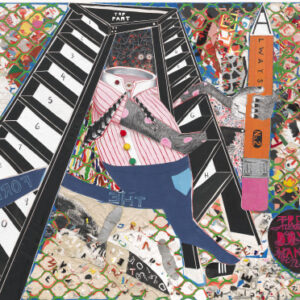
A Closer Look
Go beyond the surface of six works of art from VMFA’s collection to investigate how art can be an expression of place or personal and cultural identity; how different cultures throughout time represent history and identity through art; and what histories are publicly told and which are hidden.
Your identity is how you think of yourself, either on your own or as part of a group. For thousands of years, artists have created works of art that represent their own identity or the identity of others, whether through an idea, place, culture, or community.
With your identity in mind, go beyond the surface of the images below — and within VMFA itself. You might just discover there is more than meets the eye…
Caligula
This is a sculpture of Roman Emperor Caligula who ruled from 37-41 AD. Roman sculptors used a code of visual symbols to express the power and authority of their rulers. They combined realistic features with more idealized (or perfect) images to project an impression of power.
Caligula, Unknown Artist, Roman, ca. 38 AD, Marble
Egungun Mask
The Yoruba (West Africa) believe that the welfare of the living depends on their relationship with their ancestors. Yoruba festivals to honor ancestors include dramatic appearances by dancers wearing body-length masks, known as Egungun, with layers of brightly patterned cloth. Dancing and music are very important elements to the Egungun mask because they are among the components that bring it to life. The men who wear and dance these masks are a part of a secret society who learn the principles of Egungun and the complex dance moves.
Egungun Mask, Yoruba Artist, West Africa, 20th century, Cloth, metal, wood
The Former and the Ladder or Ascension and a Cinchin’
African American artist, Trenton Doyle Hancock, is influenced by art history, comics, illustration, as well as his own life. In this collage he combines comic book characters he created and his own identity. This self-portrait is layered with personal references, cut-up drawings and textile fragments.
The Former and the Ladder or Ascension and a Cinchin’, Trenton Doyle Hancock, American, b 1974, 2012, Acrylic and mixed media on canvas
Spring from Four Seasons
Artist Wendy Red Star thinks a lot about what it means to be a Crow Indian in America. Her art pulls from stereotypes of Native Americans and uses humor and surprise to engage visitors to go beyond their first impressions. Spring, is part of a series called Four Seasons, and was inspired by a visit to a natural history museum. In these kinds of museums, the standard format for displaying non-Western artifacts and cultures was a diorama. These fake sets and lifeless figures behind glass were supposed to represent a real place and time.
Spring from Four Seasons, Wendy Red Star, Apsáalooke (Crow) culture, b. 1981, Montana, 2006, Archival pigment print on Sunset fiber rag mounted on Maxx Metal
Willem Van Heythuysen
Kehinde Wiley’s work replaces traditional White subjects in European style paintings with contemporary Black figures. This portrait titled Willem van Heythuysen, is based on a 1625 painting of a Dutch merchant by Frans Hals. Wiley’s model takes the name of the original subject and mimics his pose and attitude. But, his clothing gives us clues he is from modern times.
Willem Van Heythuysen, Kehinde Wiley, American, b. 1977, 2006, Oil and enamel on canvas
Aeronauts: Steu and Cuda
Meet Steu and Cuda, androgynous (both male and female) twin space travellers from the future. These characters were developed to tell a story by Cochiti Pueblo artist, Virgil Ortiz. He uses traditional Cochiti pottery forms to connect an historical event, the Pueblo Revolt of 1680, with a science fiction, futuristic story he developed. In 1680, the Pueblos of New Mexico banded together to overthrow the Spanish. In the artist’s story, his characters move between the Pueblo Revolt in 1680 and a future revolt in 2180.
Aeronauts: Steu and Cuda, Virgil Ortiz, Cochiti culture, b. 1969, New Mexico, 2014, Clay, slip, and wild spinach paint
A Closer Look was on view from May 1, 2022 to November 26, 2023 and generously supported by the Community Foundation for a Greater Richmond, the Jeanette S. Lipman Endowment for Children’s Education, and Maggie Georgiadis.